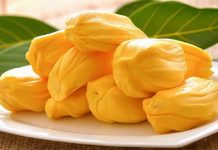Family: Annonaceae
Synonym:Annona laevis Kunth
Bengali/Vernacular name: Ata, Nona ata, Nona (Bengali); Atahol (Noakhali).
Tribal name: Ooh-jaa-sechey (Chak), Nona-king (Khumi), Thei-kel-ek (Lushai), Nu nachhi (Marma), Nay-nay-sthei (Rakhaing).
English name: Bullock’s heart, Custard apple, Sweetsop.
Description of the plant: A tree growing to a height of 10 m or less. Leaves lanceolate to oblanceolate, 20 cm long, 2-5 cm wide, base rounded to cuneate, apex acute to acuminate, glabrous above, sparsely hairy beneath, young leaves densely hairy on both surfaces. Inflorescence leaf-opposed or extra axillary, usually 2-3 flowered; flowers greenish-yellow, fragrant, 2-2.5 cm long. Fruit sub-globose to roughly heart-shaped, almost smooth, areoles separated by marked reticulation but tuberculate, reddish-brown when ripe, pulp white or cream, adhering closely to the seeds.
Plant parts used: Leaf, bark, fruit, root.
Herbal uses: Powder made from the leaves of the plant is applied to the sore two times a day until the breast sore is cured.
The leaves are warmed in open fire and applied to the stomach while still warm, kept in place by an abdominal binder, and renewed every 2 hours for the treatment of abdominal pain.
Powder prepared from the dried unripe fruit or bark is used for the treatment of diarrhoea, and dysentery.
An extract made with the root bark by boiling in water isused for gargling four times a day for five days to treat toothache.
Crushed leaves or paste of the fruit used as poultice for boils, abscesses, and ulcers.
A fresh juice extracted from the leaves of the plant is taken two times a day (5 ml amount each time) for seven days to treat asthma.
Decoction prepared from the roots of the plant is used to treat fever and epilepsy.
Fresh juice extracted from the leaves of the plant is taken for the cure of worm.
A fresh juice extracted from the leaves of the plant is taken thrice a day (10 ml amount each time) for three days to treat colic.
Distribution: It is a common homestead fruit plant, and found all over the country.
Is this plant misidentified? If yes, please tell us….














